- Home
- Graham Hancock
America Before
America Before Read online
ALSO BY GRAHAM HANCOCK
Magicians of the Gods: The Forgotten Wisdom of Earth’s Lost Civilization
War God: Nights of the Witch
Entangled: The Eater of Souls
Supernatural: Meeting with the Ancient Teachers of Mankind
Talisman: Sacred Cities, Secret Faith
Underworld: The Mysterious Origins of Civilization
Heaven’s Mirror: Quest for the Lost Civilization
The Mars Mystery: A Tale of the End of Two Worlds
The Message of the Sphinx: A Quest for the Hidden Legacy of Mankind
Fingerprints of the Gods: The Evidence of Earth’s Lost Civilization
The Sign and the Seal: The Quest for the Lost Ark of the Covenant
America Before
The Key to Earth’s Lost Civilization
Graham Hancock
www.hodder.co.uk
First published in Great Britain in 2019 by Coronet
An Imprint of Hodder & Stoughton
An Hachette UK Company
Copyright © Graham Hancock 2019
The right of Graham Hancock to be identified as the Author of the Work has been asserted by him in accordance with the Copyright, Designs and Patents Act 1988.
All rights reserved.
No part of this publication may be reproduced, stored in a retrieval system, or transmitted, in any form or by any means without the prior written permission of the publisher, nor be otherwise circulated in any form of binding or cover other than that in which it is published and without a similar condition being imposed on the subsequent purchaser.
A CIP catalogue record for this title is available from the British Library
eBook ISBN 9781473660564
Hodder & Stoughton Ltd
Carmelite House
50 Victoria Embankment
London EC4Y 0DZ
www.hodder.co.uk
For Santha,
through many lives, past, present, and future, my soul mate always.
Looking forward to more amazing adventures!
Contents
ALSO BY GRAHAM HANCOCK
TITLE PAGE
COPYRIGHT
DEDICATION
ACKNOWLEDGMENTS
INTRODUCTION
PART I: MANITOU: THE MYSTERY OF SERPENT MOUND
1. An Enchanted Realm
2. A Journey in Time
3. The Dragon and the Sun
PART II: NEW WORLD? THE MYSTERY OF THE FIRST AMERICANS
4. A Past Not So Much Hidden As Denied
5. Message from a Mastodon
6. Millennia Unaccounted For
PART III: GENES: THE MYSTERY IN DNA
7. Siberia
8. Hall of Records
9. The Strange and Mysterious Genetic Heritage of Native Americans
10. A Signal from the Dreamtime?
PART IV: MEMES: THE AMAZON MYSTERY
11. Ghost Cities of the Amazon
12. The Ancients Behind the Veil
13. Black Earth
14. Gardening Eden
15. Sacred Geometry
16. The Amazon’s Own Stonehenge
17. The Vine of the Dead
PART V: STUFF JUST KEEPS ON GETTING OLDER: THE MYSTERY OF THE PRIMEVAL MOUNDS
18. Sun
19. Moon
20. The Poverty Point Time Machine
21. Glimpses Behind the Veil
PART VI: EQUIPPED FOR JOURNEYING: THE MYSTERY OF DEATH
22. Quietus?
23. The Portal and the Path
24. Astronomy and Geometry in the Afterlife
PART VII: APOCALYPSE THEN: THE MYSTERY OF THE CATACLYSM
25. Eloise
26. Fire and Ice
27. Cape Fear
PART VIII: SURVIVE! THE MYSTERY OF THE INVISIBLE MAN
28. Hunter-Gatherers and the Lost Civilization
29. Unknown Unknowns
30. The Key to Earth’s Lost Civilization
APPENDIX 1. MELAZONIA, AKA AMANESIA
APPENDIX 2. ANCIENT MAPS OF THE ICE AGE
APPENDIX 3. FIRST THERE WAS A FOREST, THEN THERE WAS NO FOREST, THEN THERE WAS …
NOTES
INDEX
PICTURE SECTION
ACKNOWLEDGMENTS
I MAY, THROUGH OVERSIGHT, FAIL TO acknowledge properly here some of the many wonderful people who have helped me in the efforts that led to this book. If so, I hope I can be forgiven. The years grow long and memory short!
It is my wife, soul mate, and fellow adventurer, photographer Santha Faiia, to whom I owe the greatest debt. During the making of this book I suffered two terrifying episodes of seizures and loss of consciousness, as a result of which it is no longer responsible, or legal, for me to drive. So for all our thousands of miles of road trips through some of the most spectacular landscapes in California, Arizona, New Mexico, Colorado, South Dakota, Wyoming, New Hampshire, Massachusetts, upstate New York, North and South Carolina, Louisiana, Mississippi, Arkansas, Alabama, Tennessee, Missouri, Illinois, and Ohio I was in the passenger seat and Santha was behind the wheel. I therefore want to thank my extraordinary wife for her grit in the face of adversity, for her inspiring presence, for her creative talent in always taking the right photograph at the right moment, and for her immense capacity for love. I would have stalled and come to a grinding halt long ago if not for you, Santha. Thank you. Thank you for EVERYTHING.
Aside from its photographic content, this book contains large numbers of designed images illustrating some of the more complex aspects of the argument. An art director was needed, and my son Luke took on this responsibility, working around the clock to prepare the graphics and illustrations that accompany the text. Gratitude and respect for an excellent job well done.
My research assistant, Holly Lasko Skinner, worked with me on gathering documentation and tracking down hard-to-find facts from the early days of this project. She brilliantly sought out, churned through, and made sense of bewildering masses of data, carefully checked all sources, and constantly alerted me to new scientific developments. Thank you, Holly.
Ross Hamilton, an inspiring teacher of the ancient mysteries, opened my eyes to the enigma of Ohio’s Serpent Mound and helped me grasp the implications of its numinous connection to the summer solstice sunset.
William Romain, in my opinion the most important archaeologist presently studying the earthwork-building cultures of the Mississippi Valley, kindly took time to exchange views with me and granted me permission to reproduce a number of his excellent photographs and diagrams illustrating the archaeoastronomical implications of his research.
Gary David, whose work on the archaeoastronomy of the Southwest is of the first importance, generously shared his extensive knowledge and insights with me on a journey through Arizona and New Mexico.
I’m grateful to Randall Carlson, a true comrade in arms, and to Bradley Young and Camron Wiltshire, who all contributed to this project in different and important ways.
Special thanks to the scientists of the Comet Research Group whose groundbreaking Younger Dryas Impact Hypothesis provides the most complete explanation for the mysterious end of the last Ice Age and casts world prehistory in an entirely new light. Allen West, Al Goodyear, Chris Moore, and George Howard were particularly generous with their time.
I’m grateful to Tom Deméré, chief paleontologist at the San Diego Natural History Museum, for meeting with me and taking me behind the scenes to the archives to share the full implications of the discoveries at the Cerutti Mastodon Site. Indicative of a human presence in North America at least 130,000 years ago, this is a find that rewrites prehistory.
Eske Willerslev of the University of Copenhagen, a world expert in the study of ancient DNA, patiently answer
ed my questions and shared his thoughts on the anomalous Australasian genetic signal found among certain isolated peoples of the Amazon rainforest.
Meanwhile archaeological research of immense importance is under way across the Amazon, revealing the existence of stone circles and of hundreds of immense geometrical earthworks. In this context I’d like to thank Mariana Petry Cabral of the Universidade Federal de Minas Gerais, Sanna Saunaluoma, and Martti Pärssinen of the University of Helsinki, and Christopher Sean Davis of the University of Illinois, for the positive spirit with which they greeted my request to reproduce photographs and maps illustrating their findings.
For their thoroughly professional and friendly support with every aspect of our research visit to Denisova Cave in Siberia, huge thanks to Sergey Kurgin, who organized the trip and did all the driving, and to Olga Votrina, our excellent interpreter. Thanks and appreciation also to the Siberian Branch of the Institute of Archaeology and Ethnography, Russian Academy of Sciences for their kind cooperation and for their permission to reproduce photographs of artifacts from Denisova Cave.
My editors, Peter Wolverton of St. Martin’s Press in the United States and Mark Booth of Coronet in the United Kingdom, and my literary agent, Sonia Land, of Sheil Land Associates, have been superb allies and friends, giving me the benefit of their excellent advice and top-class professional expertise at every turn.
Any merits in America Before owe much to those named here, and to the many scientists and vocational researchers around the world whose discoveries are reviewed in the pages that follow. I have been diligent in my attempts to represent their work correctly, but if there are any errors or misinterpretations, then the responsibility is entirely my own.
Last but by no means least, I am blessed to be surrounded by a beautiful rainbow family without frontiers. Santha and Luke are mentioned here already, and now is the moment to put on record my love and appreciation for our other five grown-up children—Sean, Shanti, Leila, Ravi, and Gabrielle. I’m British, born in Scotland to an English father and a Scottish mother. I spent 4 years of my childhood in the Indian state of Tamil Nadu. Santha is of Tamil origin but was born and brought up in Malaysia. Sean and Leila are both half Somali and half British by birth. Shanti and Ravi are both half Tamil Malaysian and half Italian American by birth. Luke and Gabrielle are both British by birth. Leila’s husband, Jason, is Greek; Ravi’s wife, Lydia, is American; Luke’s wife, Ayako, is Japanese; and they have gifted us with three magical grandchildren, Nyla, Leo, and Henry, who brighten our lives with their innocence, infant wisdom, and laughter.
INTRODUCTION
I HAVE IN MY SHELVES A renowned and much respected book titled History Begins at Sumer.1 The reference, of course, is to the famous high civilization of the Sumerians that began to take shape in Mesopotamia—roughly modern Iraq between the Tigris and Euphrates rivers—around 6,000 years ago. Several centuries later, ancient Egypt, the very epitome of an elegant and sophisticated civilization of antiquity, became a unified state. Before bursting into full bloom, however, both Egypt and Sumer had long and mysterious prehistoric backgrounds in which many of the formative ideas of their historic periods were already present.
After the Sumerians and Egyptians followed an unbroken succession of Akkadians, Babylonians, Persians, Greeks, and Romans, and there were, moreover, the incredible achievements of ancient India and ancient China. It therefore became second nature for us to think of civilization as an “Old World” invention and not to associate it with the “New World” at all.
Besides, it was standard teaching in the nineteenth and twentieth centuries that the Americas—North, Central, and South—were among the last great landmasses on earth to be inhabited by humans, that these humans were nomadic hunter-gatherers, that most of them subsequently remained hunter-gatherers, and that nothing much of great cultural significance began to happen there until relatively recently.
This teaching is deeply in error and as we near the end of the second decade of the twenty-first century, scholars are unanimous not only that it must be thrown out but also that an entirely new paradigm of the prehistory of the Americas is called for. Such momentous shifts in science don’t occur without good reason and the reason in this case, very simply, is that a mass of compelling new evidence has come to light that completely contradicts and refutes the previous paradigm.
Everyone has and does their own “thing,” and my own thing, over more than quarter of a century of travels and research, has been a quest for a lost civilization of remote prehistory—an advanced civilization utterly destroyed at the end of the Ice Age and somewhat akin to fabled Atlantis.
Plato, in the oldest-surviving written source of the Atlantis tradition, describes it as an island “larger than Libya and Asia put together”2 situated far to the west of Europe across the Atlantic Ocean.3 Hitherto I’d resisted that obvious clue which I knew had already been pursued with unconvincing results by a number of researchers during the past century.4 As the solid evidence that archaeologists had gotten America’s Ice Age prehistory badly wrong began to accumulate in folders on my desktop, however, and with new research reports continuing to pour in, I couldn’t help but reflect on the significance of the location favored by Plato. I had considered other possibilities, as readers of my previous books know, but I had to admit that an immense island lying far to the west of Europe across the Atlantic Ocean does sound a lot like America.
I therefore decided to reopen this cold case. I would begin by gathering together the most important strands of the new evidence from the Americas. I would set these strands in order. And then I would investigate them thoroughly to see if there might be a big picture hidden among the details scattered across thousands of scientific papers in fields varying from archaeology to genetics, astronomy to climatology, agronomy to ethnology, and geology to paleontology.
It was already clear that the prehistory of the Americas was going to have to be rewritten; even the mainstream scientists were in general agreement on that. But could there be more?
This book tells the story of what I found.
The first survey map of Serpent Mound, made by Ephraim Squier and Edwin H. Davis in 1846 and published by the Smithsonian Institution in 1848, described the mound as “the most extraordinary earthwork thus far discovered in the West.”
AN ENCHANTED REALM
ARCHAEOLOGY TEACHES US THAT THE vast, inviting, resource-rich continents of North and South America were among the very last places on earth to have been inhabited by human beings. Only a handful of remote islands were settled later.
This is the orthodoxy, but it is crumbling under an onslaught of compelling new evidence revealed by new technologies, notably the effective sequencing of ancient DNA. The result is that many of the most fundamental “facts” of American archaeology, many of the “ground truths” upon which the theories and the careers of its great men and women were built in the nineteenth and twentieth centuries, now stand exposed as fallacies.
Far from being very recent, it is beginning to look as though the human presence in the Americas may be very old—perhaps more than 100,000 years older than has hitherto been believed.
This greatly extended time frame, taking us back deep into the Ice Age, has profound implications for how we view, interpret, and date all the monuments of the Americas built before the time of Columbus. The possibility that they might have an unrecognized prehistoric backstory can no longer be discounted. Moreover, the New World was physically, genetically, and culturally separated from the Old around 12,000 years ago when rising sea levels submerged the land bridge that formerly connected Siberia to Alaska.1 This separation remained total until just 500 years ago when genetic and cultural exchanges restarted during the European conquest. It follows, therefore, that any deep connections between the Americas and the Old World that are not the result of recent European influence and that cannot be attributed to coincidence must be more than 12,000 years old.
It was with all this in mind, on June 17, 2
017, that I made my first visit to Serpent Mound, a national historic landmark in southern Ohio described as “the finest surviving example of a prehistoric animal effigy mound in North America, and perhaps the world.”2
It’s in Adams County, about 75 miles east of Cincinnati and 7 miles north of the town of Peebles by way of SR-41N and OH-73W. With its rolling hills and green meadows, this is a predominantly rural, substantially forested part of the state, running northward from the Ohio River. On that vibrant summer day every tree was in full, luxuriant leaf, every flower was in bloom, the fields glowed, and the winding lanes seemed part of a bucolic dream.
In some remote epoch, however, this entire idyllic area suffered a devastating cataclysm, the most striking remnant of which has all the features of a classic impact crater 14 kilometers in diameter with a pronounced central uplift, sunken inner ring-graben, transition zone, and outer rim.3 Millions of years of erosion have softened its contours but Google Earth or an overflight reveal its obvious crater-like appearance. Most geologists agree that it is the result of some kind of explosive event but the nature of the explosion for a long while remained unsettled and there were heated arguments between those who favored volcanism and those who favored an impact by an asteroid or comet.4 Because Serpent Mound is the best-known feature within it, and because of the uncertainty caused by the dispute, the crater was therefore officially known for many years as the “Serpent Mound Cryptoexplosion Structure.”5 Only since the late 1990s has mounting evidence led to today’s widespread consensus that it was, as many had long suspected, formed by a hypervelocity cosmic impact.6
Variously referred to as the “Serpent Mound Crypto-Explosive Structure” and as the “Serpent Mound Disturbance,” most scientists now agree that the bizarre geological feature within which the mound was built is an ancient impact crater with a diameter of around 14 kilometers.
As to timing, the impact was “later than Early Mississippian, because rocks of this age [about 345 million years old] were involved in the disturbance, and earlier than the Illinoian glaciation (125,000 years ago), because these sediments are undisturbed in the northern part of the structure.”7

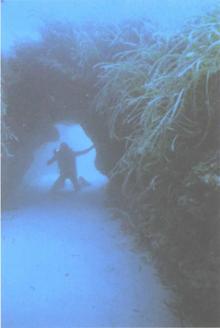 Underworld: The Mysterious Origins of Civilization
Underworld: The Mysterious Origins of Civilization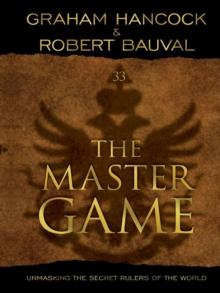 The Master Game: Unmasking the Secret Rulers of the World
The Master Game: Unmasking the Secret Rulers of the World America Before
America Before Entangled
Entangled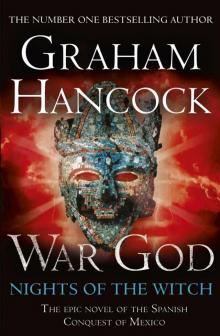 War God: Nights of the Witch
War God: Nights of the Witch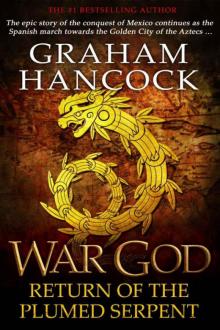 War God: Return of the Plumed Serpent
War God: Return of the Plumed Serpent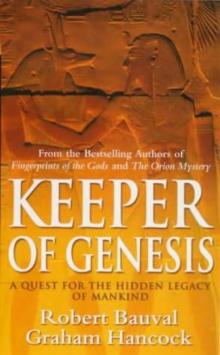 The Message of the Sphinx AKA Keeper of Genesis
The Message of the Sphinx AKA Keeper of Genesis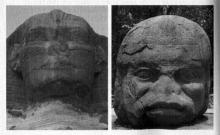 Fingerprints of the Gods
Fingerprints of the Gods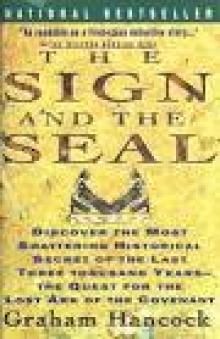 The Sign and the Seal
The Sign and the Seal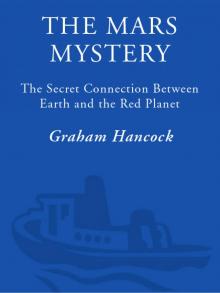 The Mars Mystery: The Secret Connection Between Earth and the Red Planet
The Mars Mystery: The Secret Connection Between Earth and the Red Planet Magicians of the Gods: The Forgotten Wisdom of Earth's Lost Civilization
Magicians of the Gods: The Forgotten Wisdom of Earth's Lost Civilization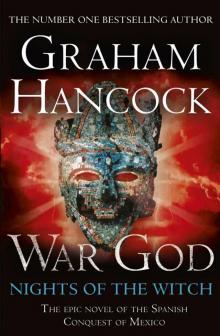 War God
War God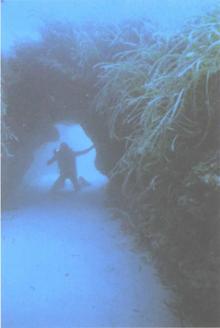 Underworld
Underworld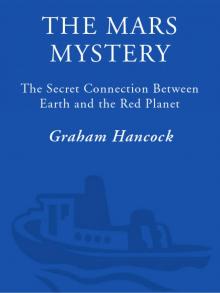 The Mars Mystery
The Mars Mystery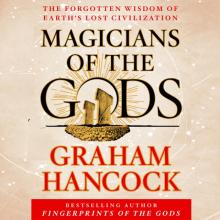 Magicians of the Gods
Magicians of the Gods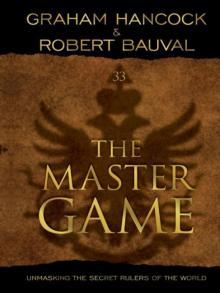 The Master Game
The Master Game